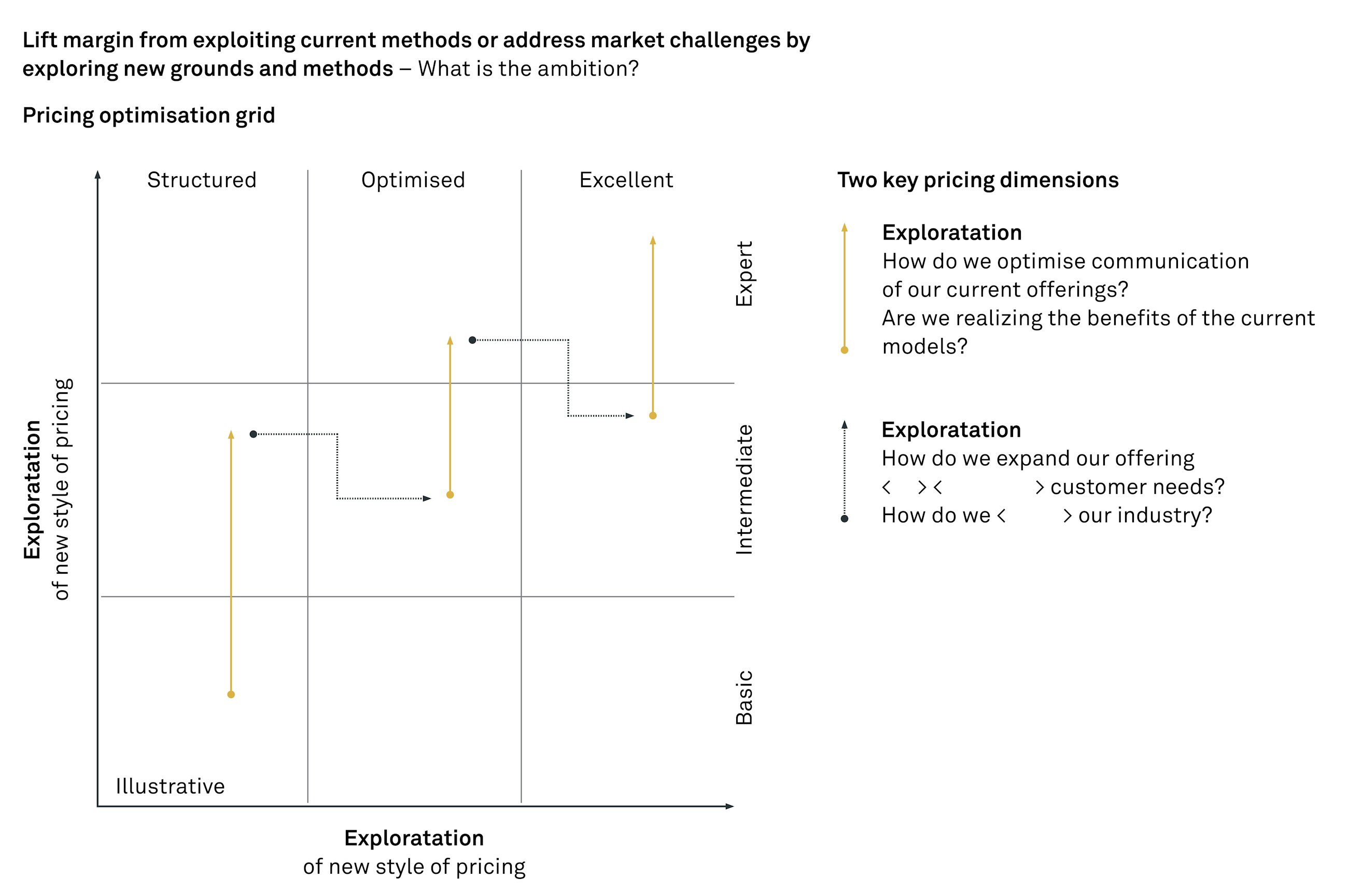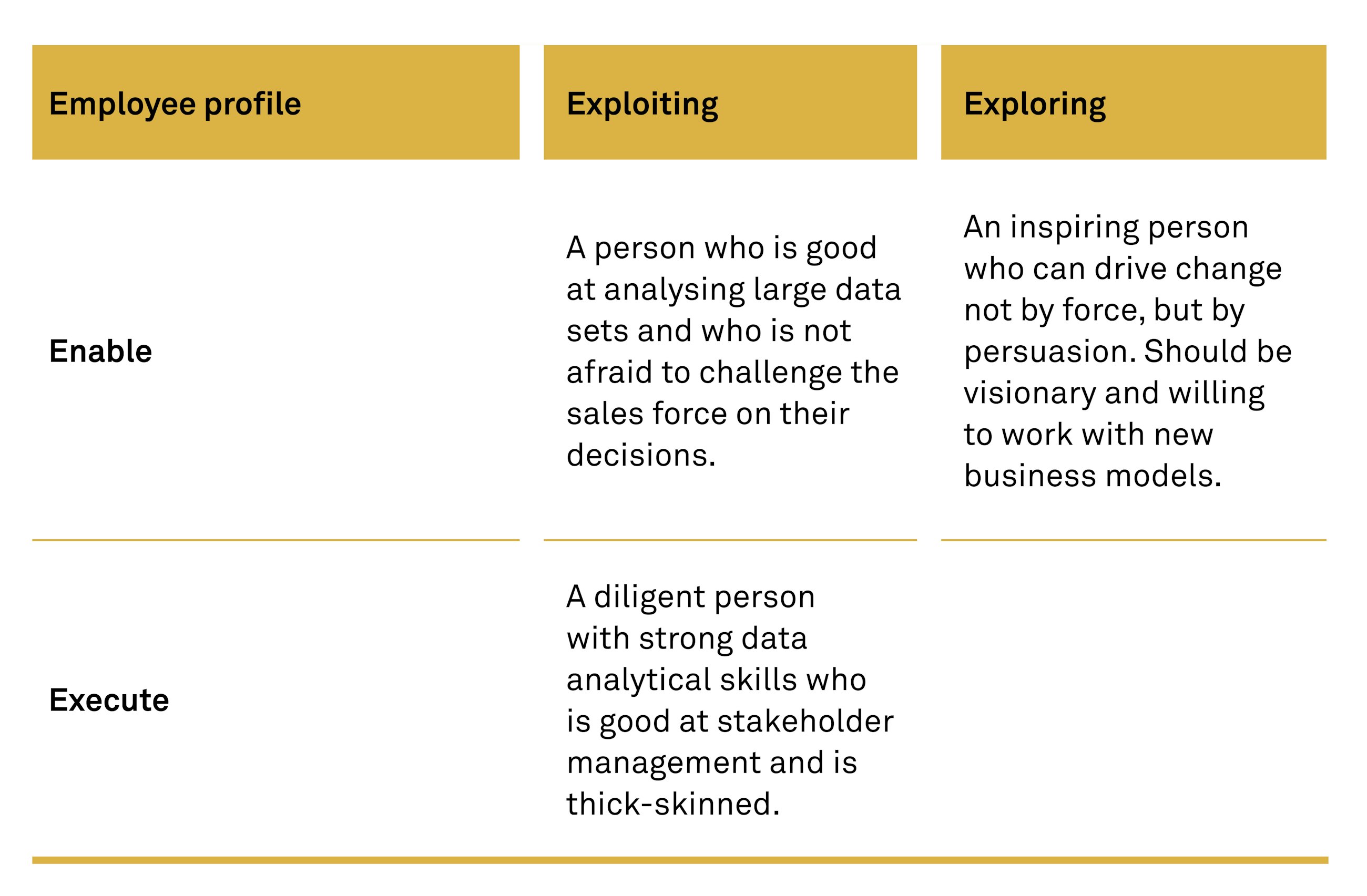20 June 2018
Are you about to reorganise the way that your organisation makes pricing decisions? If so, this article will help you navigate the multitude of options.
It is built around two dimensions of pricing which will guide you in your decisions. The first dimension is about whether you want to perfect what you are doing or find new ways of pricing. The second dimension is about who should make the actual pricing decision.
In the article, we will outline how the two dimensions influence:
- The organisational belonging of the pricing function.
- Where the decisions should be made – local or centralised.
- Who you should hire.
The two dimensions of a pricing organisation
During the years, we have come across a multitude of different ways how pricing decisions are made. This has led us to identify two dimensions that we can use to analyse how it should be done.
Explore - exploit
Pricing optimisation can be done in two different ways. Either by exploring new pricing alternatives or by exploiting the existing ones so that they are executed in a better manner.
Exploiting current pricing procedure is focused on “continue doing what is done today but improving it”. This could be a project to align discounts given to different customers, ensuring that everything in the contracts is charged for (such as freight, small order fee and late payments) and aligning list prices better to competitors’ prices.
Exploring new ways of pricing is focused on stepping out from the current ways of pricing. This could be to start selling a product as a service to radically changing the channel model (e.g. shifting from all front discount to rebates and bonuses based on performance).
One does not need to commit to one dimension but need to understand the different success criteria for each dimension.
Enable - execute
Another fundamental consideration that needs to be made is whether the pricing function should be enabling or executing.
An organisation which is geared towards enabling good pricing decisions is mainly focused on empowering the decision-makers with arguments and tools.
They use value propositions, training sessions and might design a framework for the trade terms. The final design of the trade terms and the actual pricing decision is then taken by another function (such as Sales or Marketing).
An executing pricing function sets the prices or has a voice that weighs heavily in the decision. They need to have much more detailed information than the enabling organisation and different KPIs. The executing organisation is more common in situations where there are large numbers of customers or articles , such as B2C.
Of course, there are variations, such as if the pricing function sets a minimum price on a product (executive decision) but then tries to make the sales force charge a higher price by enabling a better decision.
The two dimensions in practice through three prisms
We see that the two dimensions are very useful when designing an organisation on three different levels:
- The organisational belonging.
- Local or centralised decision-making.
- Employee profile
Organisational belonging
If an organisation wants to focus on exploiting and executing decisions, it should primarily reside in the sales organisation. This will make the feedback from the markets more direct and ensure buy-in from the sales organisation by “being one of us”. The strength in the sales organisation comes into play when trying to execute on incremental improvements (exploiting).
In the marketing organisation, the pricing function can focus on the long-term pricing perspective, and it is more natural to have a global perspective. This position is most apt for an enabling and exploring role.
Residing in the finance organisation increases the focus on incremental improvement and profitability but might hinder a more “positive” spin on pricing.
Local vs centralised decision-making
Central decision-making fits better for an enabling approach, where the focus might be on ensuring global coherence to a policy or inspiring the usage of tools such as value propositions and calculators. If the role is to set actual prices or discount levels, then the decision should be made by local pricing professionals. Only if it is of the utmost importance that the pricing follows a global standard should the pricing decision be taken centrally.
Employee profile
The profile of the pricing professional varies depending on the set-up and the mission of the organisation.
Pricing is cross-functional by nature, and the members of the team will quickly gain a lot of valuable insight into not only the company but also the market. Hopefully, this means that they will be sought for in the “internal job market”, and it is important to make sure that they can develop and move to other positions in the company. Making sure that the pricing organisation is a potential springboard for the career will increase the ability to recruit the best colleagues and ensure a solid reputation of the function.
Tying it all together
In this article, we have elaborated on how the type of pricing you want to do influences the way you should organise your decision-making. The diversity of the two dimensions, explore-exploit and enable-execute, shows the wide variety of shapes and forms that a pricing organisation can take on. To conclude, we want to give you these three last pointers to help you in your design:
- Let the type of customer you have influence the design, i.e. if you have a segmented customer base, let your organisation mirror that by having dedicated teams for each type of customers. If you have very regionalised markets with similar customers, your organisation should be organised around different regions. Conversely, the product structure could influence the way to divide the responsibilities.
- Pricing is a contentious topic that everyone feels they should own. Make sure you have a strong sponsor and clear support for what you want to achieve.
- Let the organisation evolve as your company becomes more experienced in pricing. Make the pricing function adaptable and focus on what delivers value now. Do not try to build a function that is too complex for the pricing maturity of the company, but make sure to constantly let the tasks and responsibilities evolve.
We hope that you have found this article inspiring and useful, and we wish you the best in your continued pricing journey.









